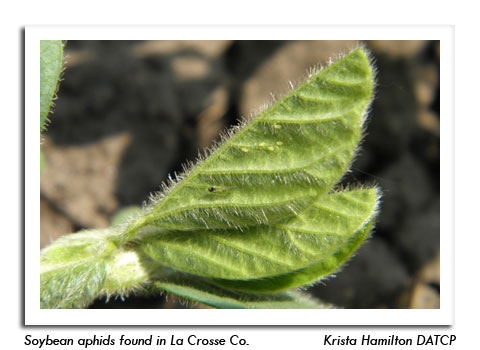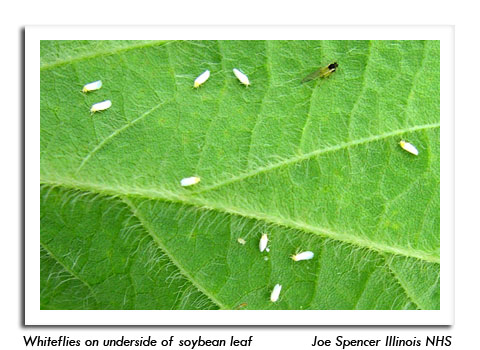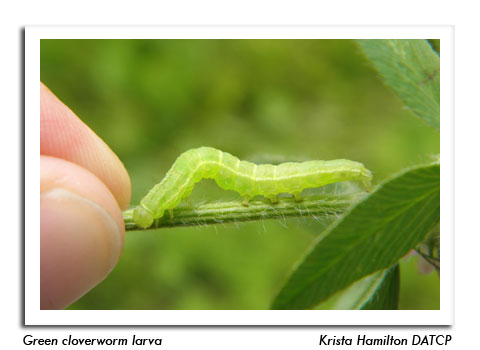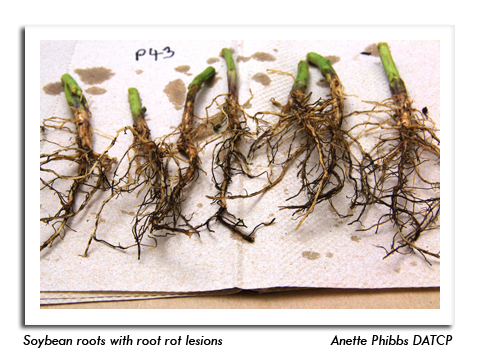
 |
|
|
Soybeans
Volume 57 Number 16 Date 08/02/2012 SOYBEAN APHID - The average count in 150 fields surveyed as of August 1 was 0.9 aphids per plant, the lowest in the history of the survey. Only two fields in Buffalo County had densities of 38-54 aphids per plant, while all others contained fewer than 5 per plant. Most soybeans will not require treatment this year, but exceptions will inevitably occur and fields must be evaluated next week. The benefits of foliar treatment diminish beyond R5 (beginning seed) and control is not economical at R6 (full seed) or later. WHITEFLY - This insect is extremely abundant in soybeans in the west-central counties. Counts range as high as 31 per leaf on individual plants. The principal threat from whiteflies in soybeans is yield loss due to sap removal and development of extensive sooty mold on the leaves, similar to the effects of soybean aphids. Whiteflies are not considered to be serious pests in Midwestern soybeans. GREEN CLOVERWORM - Larvae are beginning to appear in soybeans in the southern and central areas. Counts are currently less than 5 per 100 sweeps. Although control is unwarranted at this time, larval populations should be monitored in August since many acres of Wisconsin soybeans have required treatment for control of these worms in the previous two growing seasons. --Krista Hamilton, DATCP Entomologist PHYTOPHTHORA ROOT ROT SURVEY - DATCP Plant Pathologists surveyed 49 soybean fields for seedling root rot diseases earlier this season, from May 29-July 2. The map below illustrates the field locations and test results. Sampling within fields was biased toward areas susceptible to root rot, such as low-lying areas, field access points and headlands. Although most seedlings showed no aboveground symptoms, laboratory examination of the roots revealed signs of root rot, with many lesions on primary and finer roots. Of the 49 roots examined, eight tested positive for Phytophthora sojae (16%), compared to 27% in 2010. All samples also tested positive for Pythium. Because Pythium species vary in pathogenicity, further diagnostic work will be conducted to determine the species present. --Anette Phibbs, DATCP Plant Industry Laboratory 




|
|
|